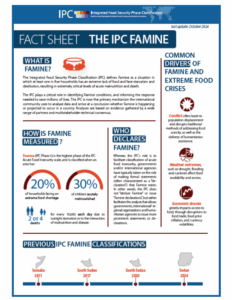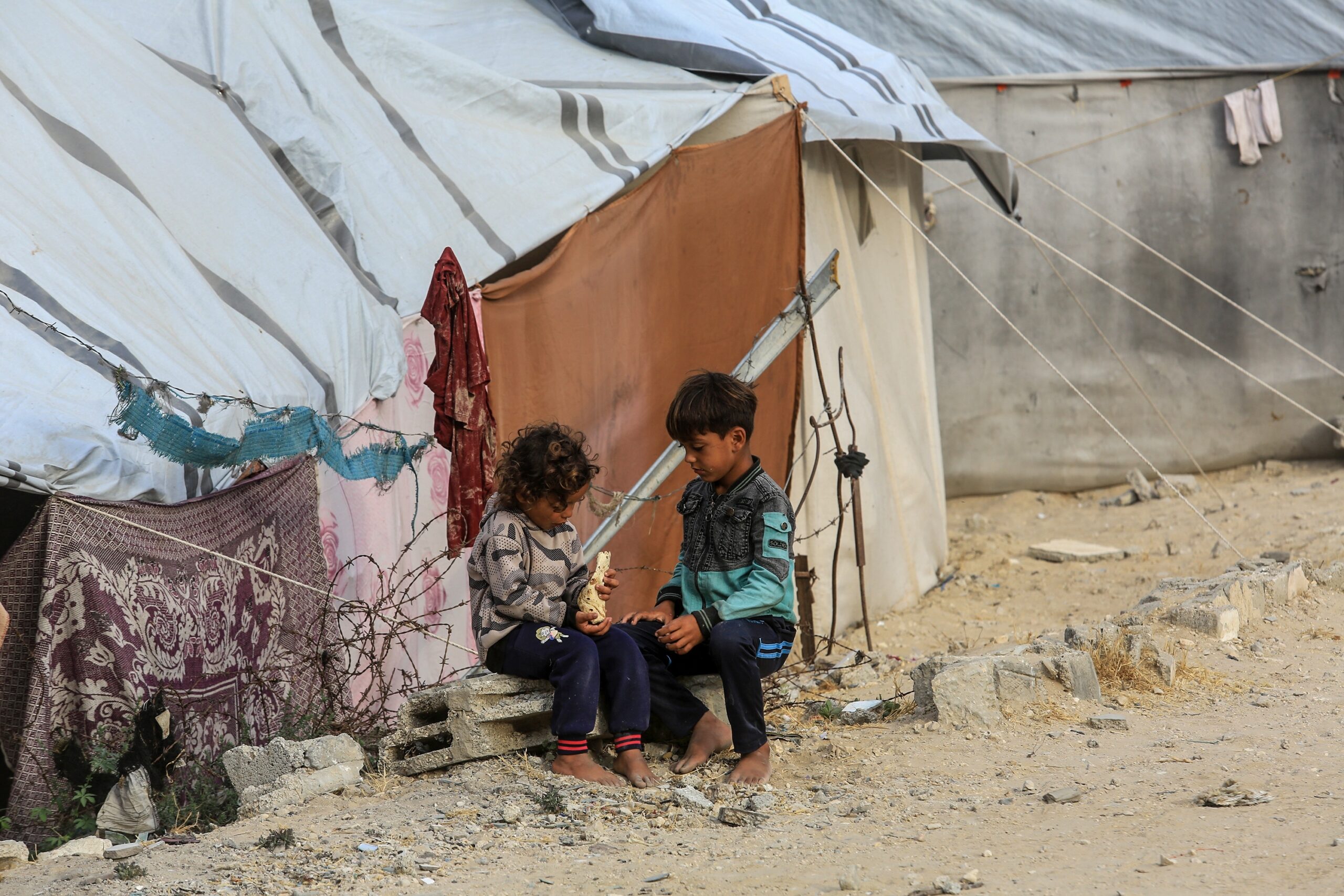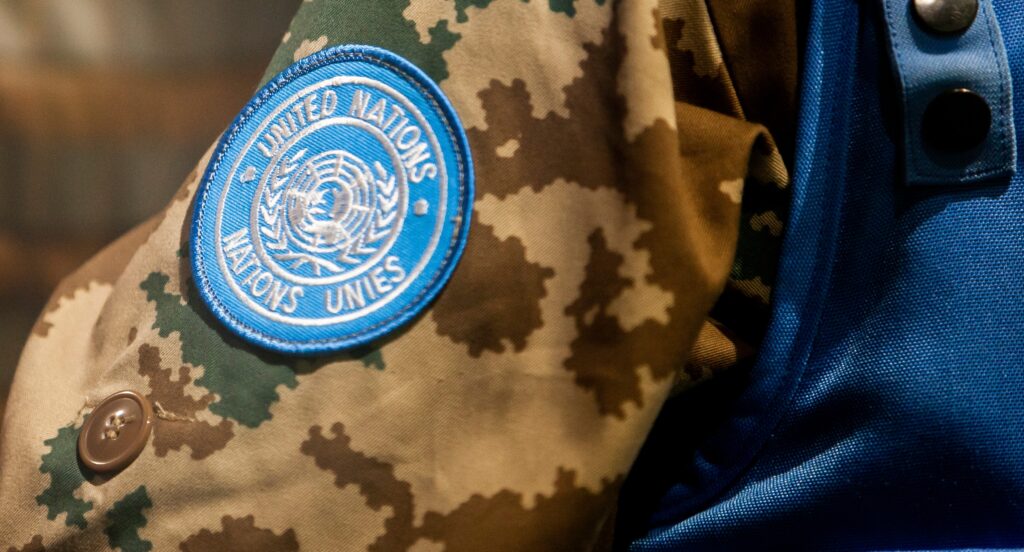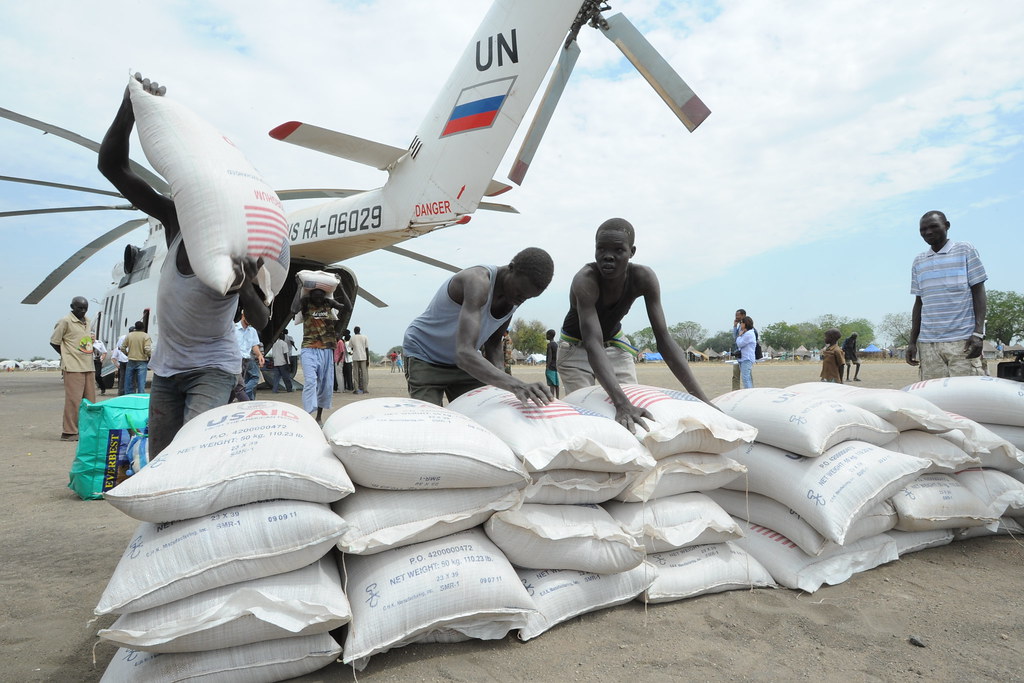This piece is adapted from its original 2023 publication on Sudan to reflect the humanitarian situation in Gaza
As of mid-2025, the humanitarian situation in Gaza has reached critical levels. According to the United Nations, more than a million people are facing food insecurity and are on the brink of famine — or may already be experiencing it. Yet in the absence of comprehensive access and independent data collection, confirming famine conditions remains a challenge. This explainer, first published during the crisis in Sudan, unpacks how famine is defined and why official declarations — or the lack of them — carry enormous humanitarian and political weight.
From Sudan to Gaza
In mid-2023, during remarks to the UN Security Council, U.S. Deputy Ambassador Robert Wood didn’t mince words: “People are dying — and have been dying — in Sudan — from starvation.”
He was referring to a report by the Famine Review Committee — an independent expert body operating under the Integrated Food Security Phase Classification (IPC) system — which concluded that parts of Sudan had entered a state of famine.
Declarations like these may sound abstract or overly technical. But they matter. For the people on the ground, they can mean the difference between inaction and a coordinated global response. And for humanitarian actors like the United States — a lead funder of global famine early warning systems — they serve as both a red flag and a rallying cry.
In fact, the U.S. isn’t just a lead funder; it almost single-handedly created the global famine monitoring and early warning systems we use today. That includes FEWS NET (the Famine Early Warning System Network), a vital tool for anticipating and mitigating hunger crises that was developed by USAID in 1985.
But when it comes to declarations of famine, the collective weight of the 21 organizations and intergovernmental institutions that make up the IPC partnership is significant. They unlock emergency funds, trigger humanitarian protocols and — at their best — drive action before it’s too late.
Defining Famine
So who actually determines when a crisis reaches the level of famine?
Official declarations come from governments — not the UN or international bodies. That said, few states want to admit they’ve failed to feed their people. In 2017, South Sudan became one rare exception, formally acknowledging famine. Three years later, UN reports found the government had restricted aid access and driven hunger for political gain. When famine returned in 2020, the same government refused to declare it again.

Which is why technical declarations matter. But even they aren’t simple. They raise tough questions: Are the data credible? Who collected them? Is the process insulated from politics?
That’s where the IPC comes in. It provides a rigorous, transparent framework — used by governments, the UN and NGOs alike — to assess and classify food insecurity.
A famine classification requires that at least two of the following thresholds are met:
- 20% of households face extreme food shortages
- 30% of children are acutely malnourished
- At least two adults or four children per 10,000 people die daily from hunger or hunger-related disease
In Sudan, the IPC Famine Review Committee determined, for example, that Zamzam Refugee Camp in North Darfur met those criteria by mid-2023. Two other camps — Abu Shouk and Al Salam — were also believed to be experiencing famine, but lack of access made verification difficult. The Sudanese government, for its part, never issued an official famine declaration.
What happens next usually depends on political will, international coordination and the ability to reach those most in need.
Which brings us to Gaza.
According to an alert issued by the IPC on Tuesday, July 29, famine is now a reality in the Gaza Strip, with escalating conflict and displacement severely limiting access to food and essential services. Starvation, malnutrition and disease are causing a rise in hunger-related deaths, and the technical thresholds have been met in much of the region.
And yet, just as the humanitarian crisis reaches its nadir, UN Member States are racing to chart a political path forward.
Humanitarian interventions and political solutions often work in tandem, and Gaza is no exception. Time, however, is running out.
For the unabridged IPC analysis of the situation in Gaza, read their complete report.




